How to Repurpose a Wine Barrel into a Planter
This article explores the creative process of transforming an old wine barrel into a beautiful planter, offering tips, techniques, and design ideas for a unique gardening experience. Have you ever looked at an old wine barrel and thought, "What a waste!"? Well, it’s time to change that perspective! Repurposing a wine barrel into a planter not only adds a rustic charm to your garden but also promotes sustainability. Imagine the satisfaction of cultivating your plants in a piece of history, all while enhancing your outdoor space. So, let’s dive into the steps to create this stunning planter that will surely become the centerpiece of your garden.
Selecting the appropriate wine barrel is crucial for your planter project. Factors like size, wood condition, and style can significantly impact the final look and functionality of your planter. When choosing a barrel, consider how much space you have and what plants you want to grow. A larger barrel can accommodate bigger plants or a variety of smaller ones, whereas a smaller barrel might be perfect for herbs or flowers. Make sure to inspect the wood condition; a well-preserved barrel will not only last longer but will also look more appealing.
Preparation is key to ensuring your wine barrel is ready for planting. This includes cleaning, checking for leaks, and making necessary modifications to enhance drainage and soil retention. The last thing you want is to plant in a barrel that could potentially harm your plants. So, let’s get into the nitty-gritty of preparing your barrel to create a safe haven for your plants.
Proper cleaning techniques involve removing any residue and ensuring the interior is safe for plants. This step is essential for preventing contamination and promoting healthy growth. You wouldn’t want your plants to suffer from the remnants of wine, right? A clean barrel is a happy barrel! So, let’s break down the cleaning process.
Removing leftover wine residue involves scrubbing the interior with mild soap and water, followed by thorough rinsing to eliminate any lingering smells or substances that could harm plants. It’s like giving your barrel a refreshing bath! Use a soft brush to reach into the corners and ensure every inch is clean. After scrubbing, rinse it out thoroughly and let it dry completely. This ensures that no soap or residue remains to interfere with your plants’ growth.
Inspecting for leaks is important to maintain soil moisture. Check for cracks or holes and seal them with waterproof sealant to prevent water loss and ensure the planter remains functional. Think of it as giving your barrel a little TLC! A well-sealed barrel will keep the soil moist and your plants happy. If you find any leaks, don’t panic! A little sealant goes a long way in ensuring your barrel is ready for its new life.
Enhancing drainage is vital for plant health. Adding holes or a drainage layer can prevent waterlogging, allowing your plants to thrive in their new environment. Remember, too much water can drown your plants, so you want to strike the right balance. Consider adding a layer of gravel or small stones at the bottom of the barrel before filling it with soil. This will help excess water drain away while retaining enough moisture for your plants’ roots.
Selecting suitable plants for your wine barrel planter is essential for aesthetic appeal and growth compatibility. Consider factors like sunlight, water needs, and growth patterns when making your choice. You want your planter to not only look good but also flourish with life! Think about what you enjoy and what will thrive in your specific climate.
Understanding the sunlight requirements of your chosen plants helps ensure they thrive. Some plants prefer full sun, while others thrive in partial shade, so choose wisely based on your location. For instance, if your barrel will be in a sunny spot, opt for sun-loving plants like petunias or geraniums. If it’s in a shadier area, consider ferns or shade-tolerant herbs like mint or parsley. It’s all about creating the right environment for your green friends!
Companion planting can enhance growth and deter pests. Research compatible plant species to create a thriving ecosystem within your wine barrel planter, maximizing both beauty and productivity. For example, planting marigolds alongside your vegetables can help repel harmful insects, while herbs like basil can improve the flavor of tomatoes when planted together. Think of it as creating a little community of plants that support each other!
Regular maintenance is crucial for the longevity and health of your wine barrel planter. This includes watering, fertilizing, and monitoring for pests to ensure your plants flourish throughout the season. Just like any garden, your wine barrel needs a little love and care to keep it thriving. Let’s explore some essential maintenance tips.
Establishing a consistent watering schedule helps maintain optimal moisture levels. Adjust frequency based on weather conditions and plant needs to prevent over or under-watering. A good rule of thumb is to check the soil moisture by sticking your finger an inch deep; if it feels dry, it’s time to water! Remember, your plants will thank you for the attention.
Implementing effective pest control strategies protects your plants from common threats. Consider natural remedies or organic pesticides to keep your wine barrel planter healthy and thriving. You don’t want to share your beautiful plants with uninvited guests! Regularly inspect your plants for any signs of pests and take action as needed. Prevention is key, so keep your plants healthy and strong!
Q: Can I use a barrel that has been treated with chemicals?
A: It's best to use food-grade barrels that haven't been treated with harmful chemicals to ensure the safety of your plants.
Q: What types of plants grow best in a wine barrel planter?
A: Herbs, flowers, and even small vegetables can thrive in a wine barrel planter, depending on your sunlight and watering conditions.
Q: How often should I water my wine barrel planter?
A: Watering frequency depends on the plants and weather, but checking the soil moisture regularly will help you determine the right schedule.
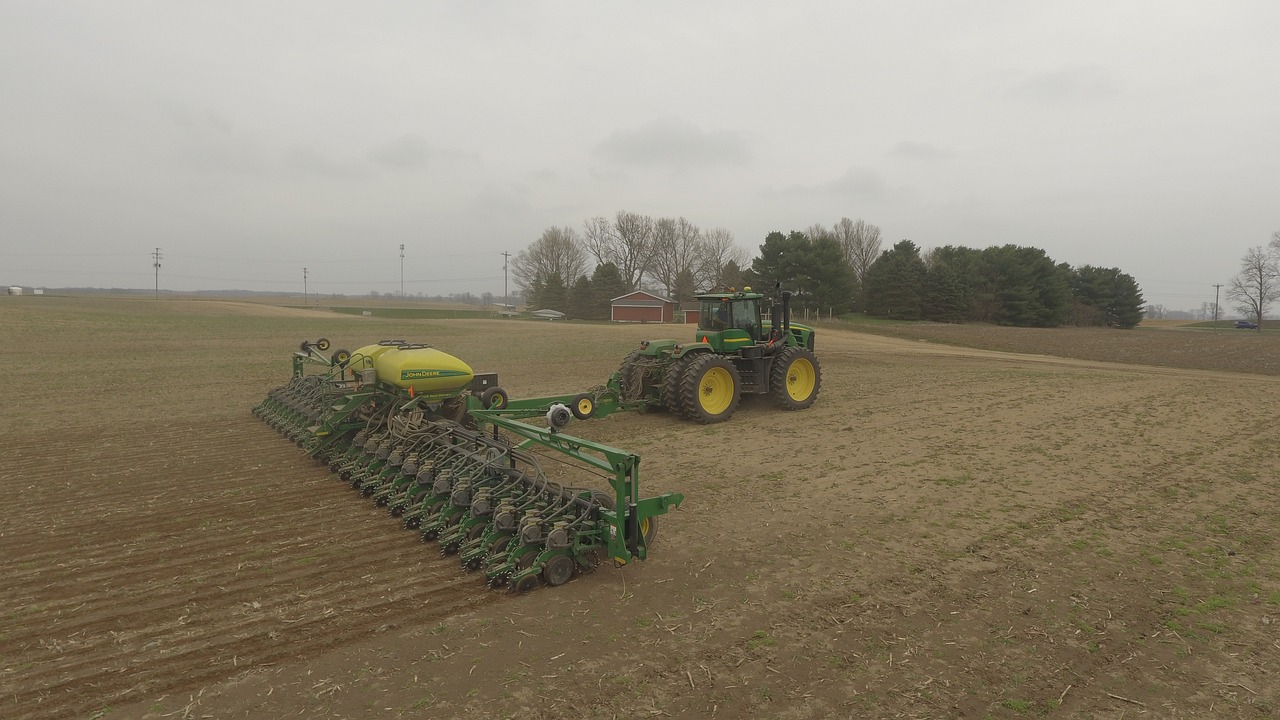
Choosing the Right Barrel
When it comes to transforming an old wine barrel into a stunning planter, the first step is to choose the right barrel. This decision can dramatically influence both the aesthetic appeal and the functionality of your planter. So, what should you look for? Let’s dive into the essential factors that can guide you in making the best choice.
First and foremost, consider the size of the barrel. Wine barrels come in various sizes, typically ranging from 30 to 60 gallons. A larger barrel provides more soil volume, which means your plants will have more room to grow. However, keep in mind that a bigger barrel can also be heavier and more challenging to move. If you're limited on space or looking to create a smaller garden, a smaller barrel might be the perfect fit.
Next, assess the wood condition. Look for barrels that are structurally sound, with minimal damage or rot. A barrel that has been well-maintained will not only look better but will also last longer in your garden. Check for any signs of deterioration, such as cracks or excessive weathering. If you find a barrel with some wear and tear, don’t worry; minor imperfections can add character to your planter. Just ensure that the barrel is still sturdy enough to hold soil and plants.
Another essential aspect to consider is the style of the barrel. Wine barrels can vary in appearance based on their age, the type of wine they held, and how they were treated. Some barrels have a rustic charm that can enhance the overall look of your garden, while others might be more polished and modern. Think about the aesthetic you want to achieve in your garden. Do you prefer a classic, vintage feel, or are you aiming for something more contemporary? Your choice of barrel should complement your existing garden decor.
Finally, it’s important to consider the source of your barrel. If possible, try to find authentic wine barrels from local wineries or suppliers. Not only will this support local businesses, but you might also discover unique barrels with rich histories. Plus, local barrels may be better suited to your climate and soil conditions, ensuring a successful gardening experience.
In summary, when choosing the right wine barrel for your planter, keep these factors in mind:
- Size: Larger barrels provide more soil volume, while smaller barrels are easier to manage.
- Wood Condition: Look for barrels that are structurally sound with minimal damage.
- Style: Choose a barrel that complements your garden's aesthetic.
- Source: Opt for authentic barrels from local suppliers for the best quality.
By carefully considering these elements, you'll be well on your way to selecting a wine barrel that not only looks great but also serves as a functional and thriving planter in your garden.
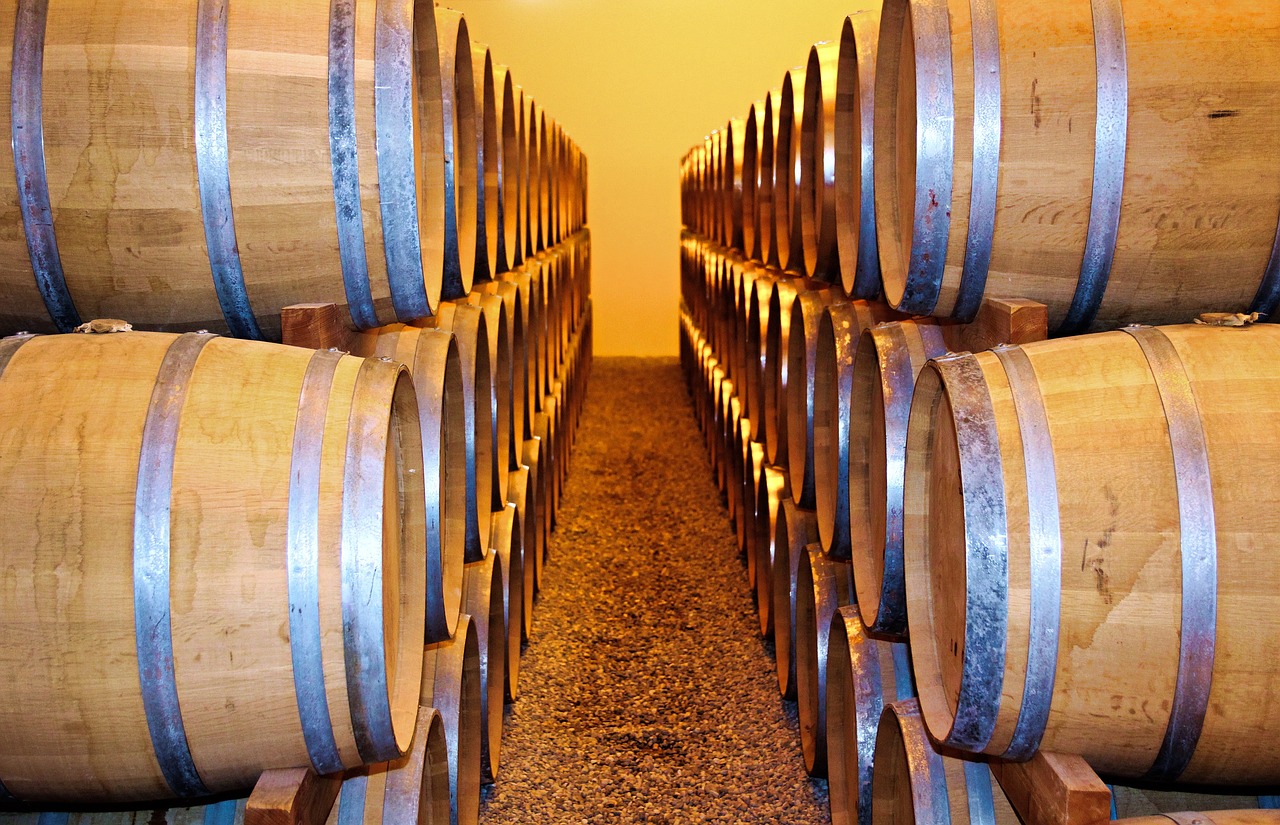
Preparing the Barrel
When it comes to transforming your old wine barrel into a stunning planter, preparation is key. This step is crucial to ensure that your barrel is not only visually appealing but also functional for your plants. Start by giving your barrel a good cleaning. This means getting rid of any leftover wine residue that could potentially harm your plants. Imagine trying to grow a beautiful garden in a barrel that still smells like last summer's Merlot—yikes! To tackle this, scrub the interior with a mixture of mild soap and warm water. It’s like giving your barrel a spa day; you want it to be fresh and ready to nurture new life.
Once your barrel is clean, it’s time to inspect it for leaks. Think of this as checking for any cracks in your plan—if your barrel isn’t watertight, you’ll end up with a soggy mess instead of a thriving garden. Look closely for any signs of damage, such as cracks or holes. If you do find any, don’t worry! Just grab some waterproof sealant and patch those up. This will help retain moisture, ensuring your plants have a steady supply of water without drowning in excess.
As mentioned, proper cleaning techniques are essential for a successful barrel planter. You want to make sure that the interior is not only clean but also safe for your plants. After scrubbing with soap, rinse thoroughly to remove any soap residue. This is a critical step; leftover soap can be harmful to your plants and disrupt their growth. Once cleaned, let the barrel dry completely before moving on to the next steps.
Removing leftover wine residue is more than just a chore; it’s a vital step in preparing your planter. Use a stiff brush to scrub the interior, focusing on any areas that seem particularly grimy. You might be surprised at how much residue can linger, so don’t rush this part. A thorough cleaning ensures that your plants will have a healthy start. After scrubbing, rinse with clean water until no soap or wine smell remains. It’s all about creating a clean slate for your new green friends!
Now that your barrel is clean, it’s time to inspect it for leaks. This inspection is crucial for maintaining soil moisture, which is essential for your plants' health. Look for any cracks or holes, especially at the bottom of the barrel where water tends to pool. If you find any issues, apply a waterproof sealant to create a barrier against leaks. This simple step can save you from future headaches and ensure that your plants have the moisture they need to thrive.
Enhancing drainage is another vital component of preparing your wine barrel for planting. Proper drainage prevents waterlogging, which can suffocate roots and lead to root rot—a fate no plant deserves! To enhance drainage, consider drilling a few holes in the bottom of the barrel. You could also add a layer of gravel or small stones at the bottom to create a natural drainage system. This layer will help excess water escape while retaining some moisture for your plants. Think of it as creating a cozy little home for your plants, where they can thrive without drowning!
In summary, preparing your wine barrel for planting involves a few essential steps that can make all the difference in your gardening experience. From cleaning and sealing to enhancing drainage, each step is designed to create a thriving environment for your plants. So roll up your sleeves and get ready to transform that old barrel into a beautiful planter!
- What type of wine barrel is best for planting? Look for barrels made of oak, as they are durable and provide good insulation for plant roots.
- Can I use a barrel that has been treated with chemicals? It's best to avoid chemically treated barrels, as they can leach harmful substances into the soil.
- How often should I check for leaks? Regularly inspect your barrel, especially after heavy rains or watering, to ensure it remains watertight.
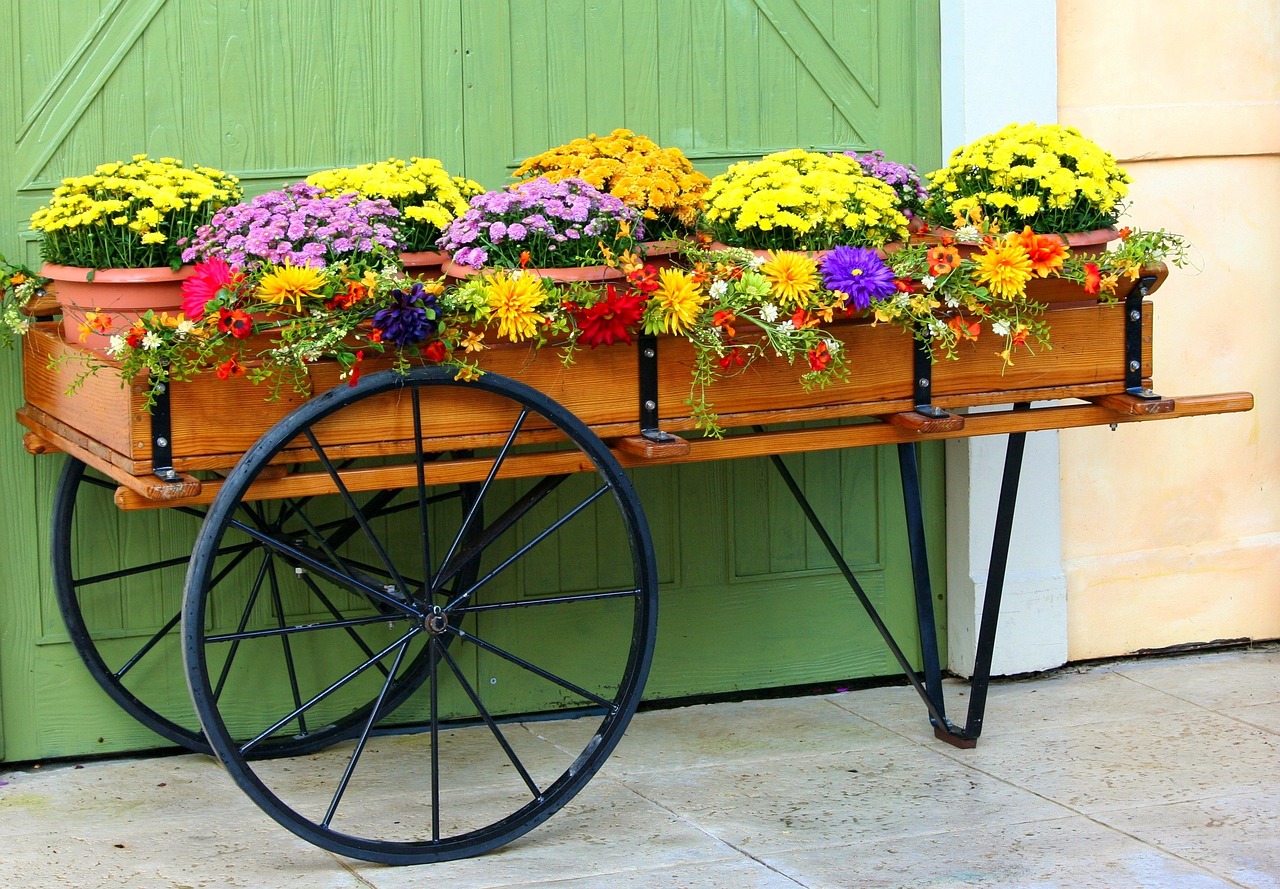
Cleaning Techniques
When it comes to transforming your old wine barrel into a stunning planter, play a pivotal role in ensuring the health and vitality of your plants. First things first, you want to make sure that the interior of the barrel is free from any leftover residue that could potentially harm your plants. This means rolling up your sleeves and getting ready for some scrubbing! Start by using a mixture of mild soap and warm water to scrub the interior thoroughly. A soft-bristled brush works wonders for getting into those nooks and crannies where wine residue might be hiding.
After scrubbing, it’s crucial to rinse the barrel thoroughly. You want to eliminate any soap residue, as well as lingering smells that could affect your plants. A good rinse will leave your barrel smelling fresh and ready for its new life as a planter. If you want to take it a step further, consider soaking the barrel in clean water for a few hours—this can help flush out any stubborn residues.
Once your barrel is clean, the next step is to check for any leaks. This is essential because you want to maintain the right moisture levels for your plants. Inspect the wood for any cracks or holes that might allow water to escape. If you find any, don’t fret! A waterproof sealant can be your best friend here. Simply apply the sealant to the affected areas and allow it to dry completely before moving on to the planting phase. This little step can save you from a lot of headaches down the road.
Finally, enhancing the drainage of your wine barrel is crucial for plant health. You can achieve this by drilling a few additional holes in the bottom if your barrel doesn’t have enough drainage already. Additionally, consider adding a drainage layer at the bottom of the barrel. Materials like small stones or gravel can be excellent for this purpose. Not only do they help with drainage, but they also prevent soil from washing out of the barrel when you water your plants.
- How often should I clean my wine barrel planter? It's a good idea to clean your planter at the beginning of each planting season to prevent any buildup of residues and ensure a healthy environment for your plants.
- Can I use bleach to clean the barrel? It's not recommended to use bleach, as it can leave harmful residues. Stick to mild soap and water for the safest cleaning method.
- What plants are best for a wine barrel planter? Look for plants that thrive in container gardening, such as herbs, flowers, or even small vegetables, depending on your sunlight and space availability.

Removing Residue
This article explores the creative process of transforming an old wine barrel into a beautiful planter, offering tips, techniques, and design ideas for a unique gardening experience.
Selecting the appropriate wine barrel is crucial for your planter project. Factors like size, wood condition, and style can significantly impact the final look and functionality of your planter.
Preparation is key to ensuring your wine barrel is ready for planting. This includes cleaning, checking for leaks, and making necessary modifications to enhance drainage and soil retention.
Proper cleaning techniques involve removing any residue and ensuring the interior is safe for plants. This step is essential for preventing contamination and promoting healthy growth.
When it comes to from your wine barrel, attention to detail is paramount. The first step is to gather your cleaning supplies, which should include mild soap, warm water, a scrub brush, and a hose or bucket for rinsing. Imagine your barrel as a treasure chest; if it’s not clean, the beauty of what you plant inside won’t shine through. Start by pouring a mixture of soap and warm water into the barrel, letting it soak for a few minutes to loosen any stubborn residue. Then, grab your scrub brush and get to work. Make sure to scrub the interior thoroughly, focusing on the bottom and sides where residue tends to accumulate. Rinse the barrel with clean water, ensuring all soap is washed away, as any lingering soap could harm your plants.
After rinsing, it’s a good idea to let the barrel air dry completely. This helps to eliminate any remaining odors and ensures that your plants will have a fresh start. If you notice any stubborn stains or smells that persist, consider using a mixture of baking soda and water as a natural scrub. Not only is this effective, but it’s also safe for your future plants. Remember, a clean barrel is not just about aesthetics; it’s about creating a healthy environment for your plants to thrive.
Inspecting for leaks is important to maintain soil moisture. Check for cracks or holes and seal them with waterproof sealant to prevent water loss and ensure the planter remains functional.
Enhancing drainage is vital for plant health. Adding holes or a drainage layer can prevent waterlogging, allowing your plants to thrive in their new environment.
Selecting suitable plants for your wine barrel planter is essential for aesthetic appeal and growth compatibility. Consider factors like sunlight, water needs, and growth patterns when making your choice.
Understanding the sunlight requirements of your chosen plants helps ensure they thrive. Some plants prefer full sun, while others thrive in partial shade, so choose wisely based on your location.
Companion planting can enhance growth and deter pests. Research compatible plant species to create a thriving ecosystem within your wine barrel planter, maximizing both beauty and productivity.
Regular maintenance is crucial for the longevity and health of your wine barrel planter. This includes watering, fertilizing, and monitoring for pests to ensure your plants flourish throughout the season.
Establishing a consistent watering schedule helps maintain optimal moisture levels. Adjust frequency based on weather conditions and plant needs to prevent over or under-watering.
Implementing effective pest control strategies protects your plants from common threats. Consider natural remedies or organic pesticides to keep your wine barrel planter healthy and thriving.
- Can I use a wine barrel that has been previously used for other liquids? Yes, but make sure to clean it thoroughly to avoid contamination.
- What types of plants grow best in wine barrel planters? Herbs, flowers, and even small shrubs can thrive in a wine barrel planter.
- How often should I water my wine barrel planter? Watering frequency depends on the plants you choose and the weather conditions, but generally, check the soil moisture regularly.
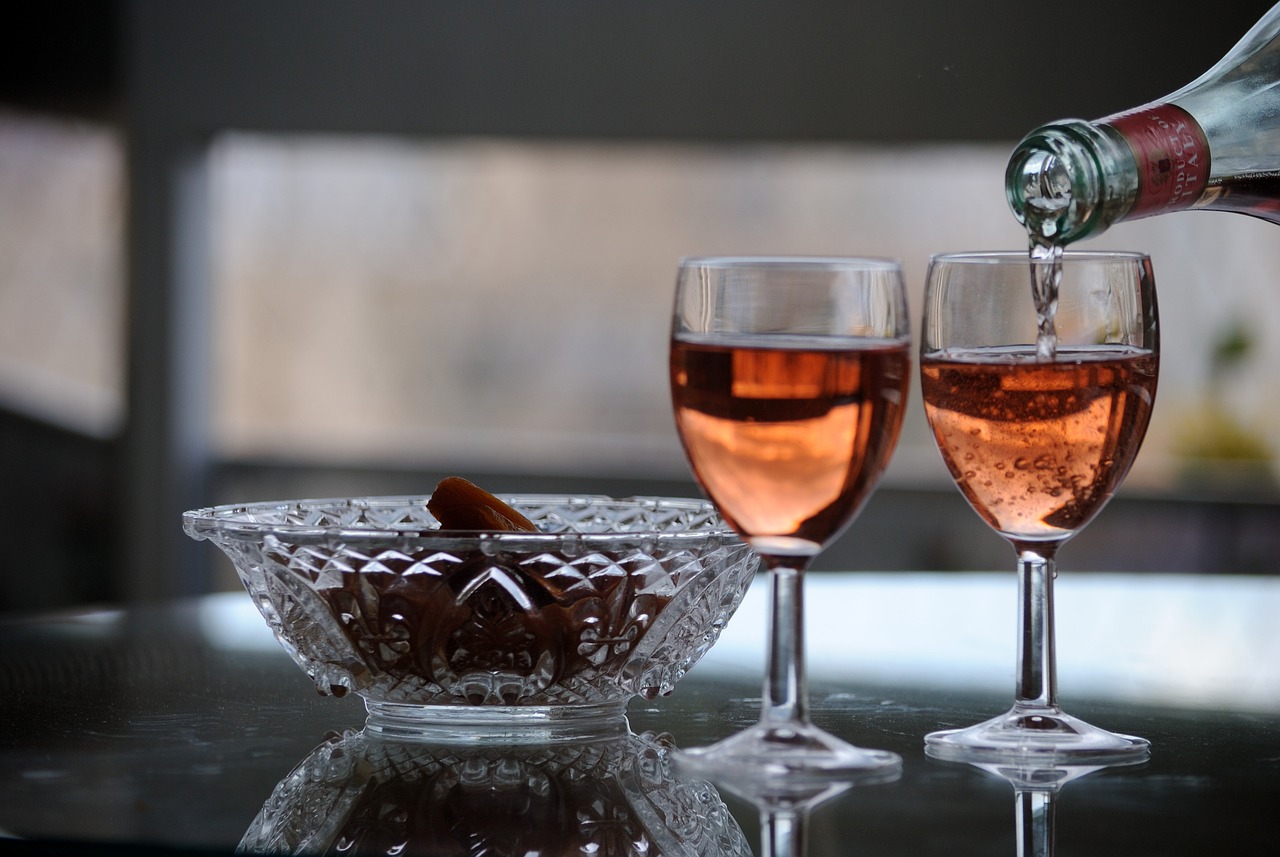
Inspecting for Leaks
This article explores the creative process of transforming an old wine barrel into a beautiful planter, offering tips, techniques, and design ideas for a unique gardening experience.
Selecting the appropriate wine barrel is crucial for your planter project. Factors like size, wood condition, and style can significantly impact the final look and functionality of your planter.
Preparation is key to ensuring your wine barrel is ready for planting. This includes cleaning, checking for leaks, and making necessary modifications to enhance drainage and soil retention.
Proper cleaning techniques involve removing any residue and ensuring the interior is safe for plants. This step is essential for preventing contamination and promoting healthy growth.
Removing leftover wine residue involves scrubbing the interior with mild soap and water, followed by thorough rinsing to eliminate any lingering smells or substances that could harm plants.
Inspecting for leaks is a critical step in preparing your wine barrel for its new role as a planter. If your barrel has any cracks or holes, it can lead to significant water loss, which in turn affects the moisture levels essential for your plants' health. To start, carefully examine the exterior and interior of the barrel. Look for any signs of damage, such as:
- Cracks in the wood
- Holes that might have developed over time
- Areas where the wood appears to be rotting
Once you've identified any potential leaks, it's important to seal them effectively. A waterproof sealant is your best friend here. Apply it generously over any cracks or holes, ensuring that the entire area is covered. This not only prevents water from escaping but also helps maintain the overall integrity of the barrel.
After sealing, allow the barrel to dry completely before moving on to the next steps in your planter preparation. A quick water test can also be beneficial. Fill the barrel with water and observe if any leaks appear. If you notice any, simply reapply the sealant as needed. Remember, a well-sealed barrel is a happy barrel, and your plants will thank you for the extra care!
Enhancing drainage is vital for plant health. Adding holes or a drainage layer can prevent waterlogging, allowing your plants to thrive in their new environment.
Selecting suitable plants for your wine barrel planter is essential for aesthetic appeal and growth compatibility. Consider factors like sunlight, water needs, and growth patterns when making your choice.
Understanding the sunlight requirements of your chosen plants helps ensure they thrive. Some plants prefer full sun, while others thrive in partial shade, so choose wisely based on your location.
Companion planting can enhance growth and deter pests. Research compatible plant species to create a thriving ecosystem within your wine barrel planter, maximizing both beauty and productivity.
Regular maintenance is crucial for the longevity and health of your wine barrel planter. This includes watering, fertilizing, and monitoring for pests to ensure your plants flourish throughout the season.
Establishing a consistent watering schedule helps maintain optimal moisture levels. Adjust frequency based on weather conditions and plant needs to prevent over or under-watering.
Implementing effective pest control strategies protects your plants from common threats. Consider natural remedies or organic pesticides to keep your wine barrel planter healthy and thriving.
Q: Can I use a wine barrel that has been previously used for spirits?
A: Yes, but make sure to clean it thoroughly to remove any residual alcohol that could affect plant growth.
Q: What types of plants grow best in a wine barrel planter?
A: Herbs, flowers, and even small vegetables can thrive in a wine barrel planter, depending on sunlight and water requirements.
Q: How often should I check for leaks?
A: It's a good practice to inspect your barrel for leaks at the beginning of each planting season or after heavy rainfall.
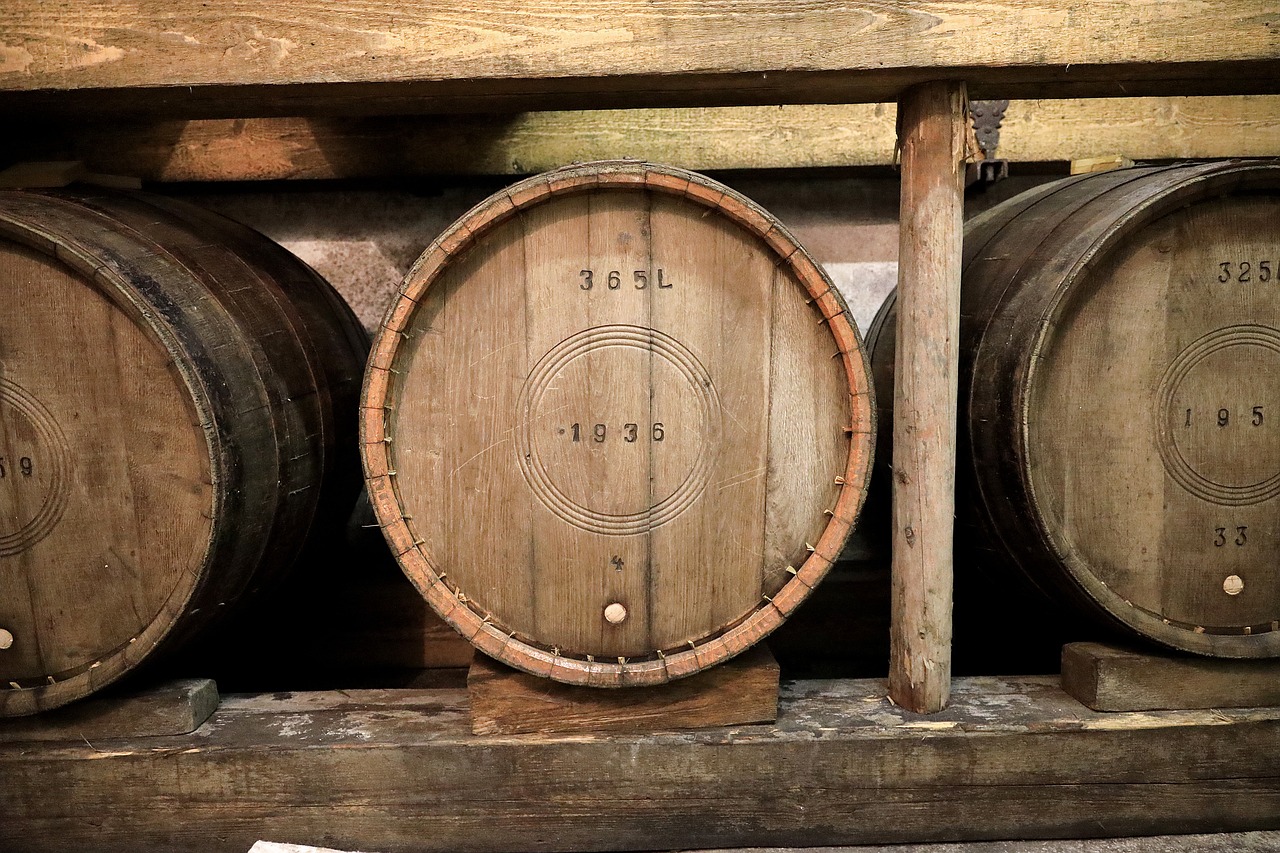
Enhancing Drainage
Enhancing drainage is absolutely vital for the health of your plants, especially when using a wine barrel as a planter. Think of it as giving your plants a cozy home where they can breathe and thrive. Without proper drainage, the roots may drown in excess water, leading to rot and other unpleasant issues. So, how do we ensure our wine barrel planter has the right drainage? Let’s dive into some effective techniques!
First off, consider adding holes to the bottom of your barrel. If your barrel doesn't already have drainage holes, grab a drill and create several small ones. This simple step can make a world of difference! Aim for a few holes spaced evenly across the bottom. Not only does this allow excess water to escape, but it also prevents water from pooling, which can lead to root rot.
Next, think about incorporating a drainage layer. This can be as simple as adding a few inches of gravel or small stones at the bottom of the barrel. This layer acts like a sponge, absorbing excess moisture and allowing it to drain away from the soil. It’s like building a safety net for your plants, ensuring they don’t sit in soggy soil. A typical setup might look like this:
| Layer | Material | Purpose |
|---|---|---|
| 1 | Gravel or Small Stones | Enhances drainage and prevents water pooling |
| 2 | Landscape Fabric | Prevents soil from washing away while allowing water to pass |
| 3 | Potting Soil | Provides nutrients and structure for plant growth |
Additionally, consider using a layer of landscape fabric above the gravel. This fabric acts as a barrier, preventing soil from mixing with the stones while still allowing water to flow through. It’s like putting a filter in your wine barrel, ensuring that the soil stays where it belongs while keeping the drainage system intact.
Finally, always monitor the moisture levels in your barrel. If you notice that the soil is consistently wet, it might be time to reassess your drainage setup. Remember, your plants are like us—they need the right balance of moisture to thrive. With these enhancements, you can create a flourishing environment for your plants, ensuring they have the best chance to grow strong and healthy!
- How often should I check the drainage in my wine barrel planter? It's a good idea to check the drainage every couple of weeks, especially after heavy rains or watering.
- Can I use my wine barrel planter for all types of plants? Most plants will thrive in a wine barrel, but it's important to choose plants with similar water and sunlight needs.
- What if my barrel doesn't have drainage holes? You can easily add holes with a drill, ensuring they are spaced evenly to promote good drainage.
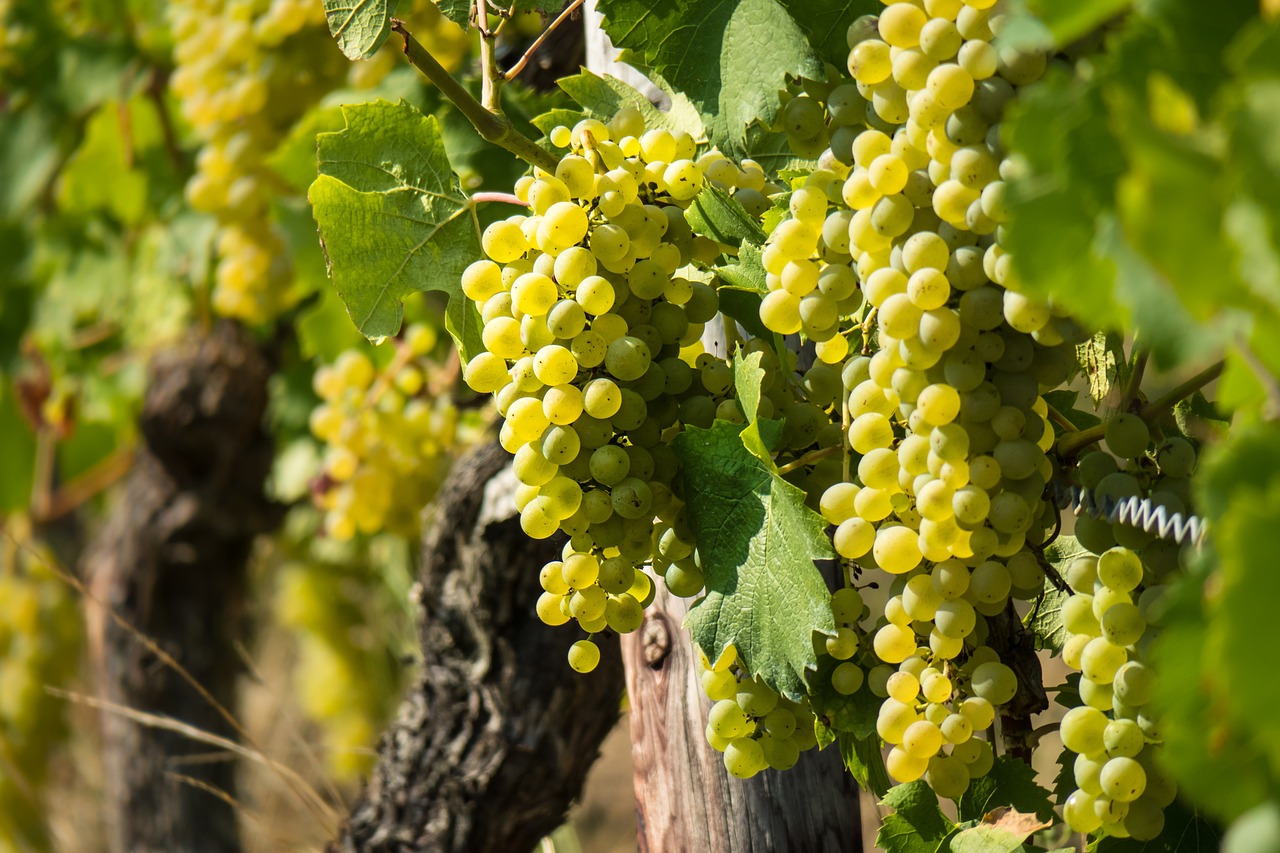
Choosing the Right Plants
When it comes to transforming your wine barrel into a stunning planter, is just as crucial as the barrel itself. Think of your planter as a stage, and the plants as the stars of the show. You want to select species that not only look good together but also thrive in the same environment. This means considering factors like sunlight requirements, water needs, and growth patterns. After all, you wouldn’t want to put a sun-loving diva next to a shade-preferring wallflower, right?
First off, let’s talk about sunlight requirements. Different plants have different preferences when it comes to sunlight exposure. Some love basking in full sun for most of the day, while others prefer dappled light or even shade. To make the best choice, observe the area where your wine barrel will sit. Is it a sun-soaked spot, or does it get some shade in the afternoon? Here’s a quick guide:
| Plant Type | Sunlight Needs |
|---|---|
| Succulents | Full Sun |
| Ferns | Partial Shade |
| Petunias | Full Sun |
| Hostas | Shade |
Next, let’s dive into water needs. Some plants are thirsty and require frequent watering, while others are more drought-tolerant. It’s essential to group plants with similar watering requirements to avoid the risk of over or under-watering. Imagine trying to quench the thirst of a cactus while drowning a delicate fern; it just won’t work! By choosing plants that share similar moisture needs, you’ll create a harmonious environment that promotes healthy growth.
Additionally, consider the growth patterns of your chosen plants. Some plants grow tall and upright, while others spread out and create a lush ground cover. Mixing these growth habits can add depth and visual interest to your wine barrel planter. For instance, pairing a tall sunflower with trailing vines like sweet potato or ivy can create a stunning vertical display. The combination of heights and textures will make your planter an eye-catching centerpiece in your garden.
Lastly, don’t forget about companion planting. Certain plants can benefit each other when grown together. For instance, marigolds can deter pests while enhancing the growth of nearby vegetables. Researching compatible plant species can help you create a thriving ecosystem within your wine barrel planter. Not only will this maximize beauty, but it will also improve productivity, making your gardening experience even more rewarding.
In summary, when choosing the right plants for your wine barrel planter, pay attention to their sunlight requirements, water needs, growth patterns, and compatibility. By carefully selecting plants that complement each other, you'll create a vibrant and thriving garden that not only beautifies your space but also brings you joy throughout the growing season.
- What types of plants are best for a wine barrel planter? Look for plants that have similar sunlight and water needs. Consider herbs, flowers, or even small vegetables.
- How often should I water my wine barrel planter? This depends on the plants you choose, the weather, and the soil moisture. Regular checks are essential to avoid over or under-watering.
- Can I use a wine barrel for indoor plants? Absolutely! Just ensure proper drainage and choose plants that thrive in indoor conditions.

Sunlight Requirements
This article explores the creative process of transforming an old wine barrel into a beautiful planter, offering tips, techniques, and design ideas for a unique gardening experience.
Selecting the appropriate wine barrel is crucial for your planter project. Factors like size, wood condition, and style can significantly impact the final look and functionality of your planter.
Preparation is key to ensuring your wine barrel is ready for planting. This includes cleaning, checking for leaks, and making necessary modifications to enhance drainage and soil retention.
Proper cleaning techniques involve removing any residue and ensuring the interior is safe for plants. This step is essential for preventing contamination and promoting healthy growth.
Removing leftover wine residue involves scrubbing the interior with mild soap and water, followed by thorough rinsing to eliminate any lingering smells or substances that could harm plants.
Inspecting for leaks is important to maintain soil moisture. Check for cracks or holes and seal them with waterproof sealant to prevent water loss and ensure the planter remains functional.
Enhancing drainage is vital for plant health. Adding holes or a drainage layer can prevent waterlogging, allowing your plants to thrive in their new environment.
Selecting suitable plants for your wine barrel planter is essential for aesthetic appeal and growth compatibility. Consider factors like sunlight, water needs, and growth patterns when making your choice.
Understanding the of your chosen plants is crucial for ensuring they thrive in your wine barrel planter. Different plants have varying needs when it comes to sunlight exposure. For instance, some plants, like tomatoes and peppers, prefer full sun, which means they need at least 6 to 8 hours of direct sunlight daily. On the other hand, shade-loving plants, such as ferns and hostas, thrive in areas with indirect sunlight or partial shade.
To make the most out of your planting experience, it's essential to consider the specific sunlight conditions of your garden space. You might find that certain areas receive more sun than others throughout the day. A simple way to determine this is by observing your garden at different times. Take note of which spots bask in sunlight and which remain shaded. This knowledge can guide you in selecting the right plants that will flourish in their designated spots.
Here's a quick reference table to help you understand the sunlight needs of various plants:
| Plant Type | Sunlight Requirement |
|---|---|
| Tomatoes | Full sun (6-8 hours) |
| Peppers | Full sun (6-8 hours) |
| Ferns | Partial shade |
| Hostas | Partial shade |
By matching your plants with the right sunlight conditions, you'll not only create a visually appealing display but also foster a thriving environment for your plants. Remember, the right amount of sunlight can make all the difference between a flourishing garden and one that struggles to survive.
Regular maintenance is crucial for the longevity and health of your wine barrel planter. This includes watering, fertilizing, and monitoring for pests to ensure your plants flourish throughout the season.
Establishing a consistent watering schedule helps maintain optimal moisture levels. Adjust frequency based on weather conditions and plant needs to prevent over or under-watering.
Implementing effective pest control strategies protects your plants from common threats. Consider natural remedies or organic pesticides to keep your wine barrel planter healthy and thriving.
- Can I use any type of wine barrel for planting? Yes, but it's best to choose barrels made from untreated wood to avoid chemical contamination.
- How do I know if my plants are getting enough sunlight? Observe their growth; if they are leggy or not flowering, they may need more light.
- What should I do if my wine barrel leaks? Seal any cracks with a waterproof sealant to retain moisture.
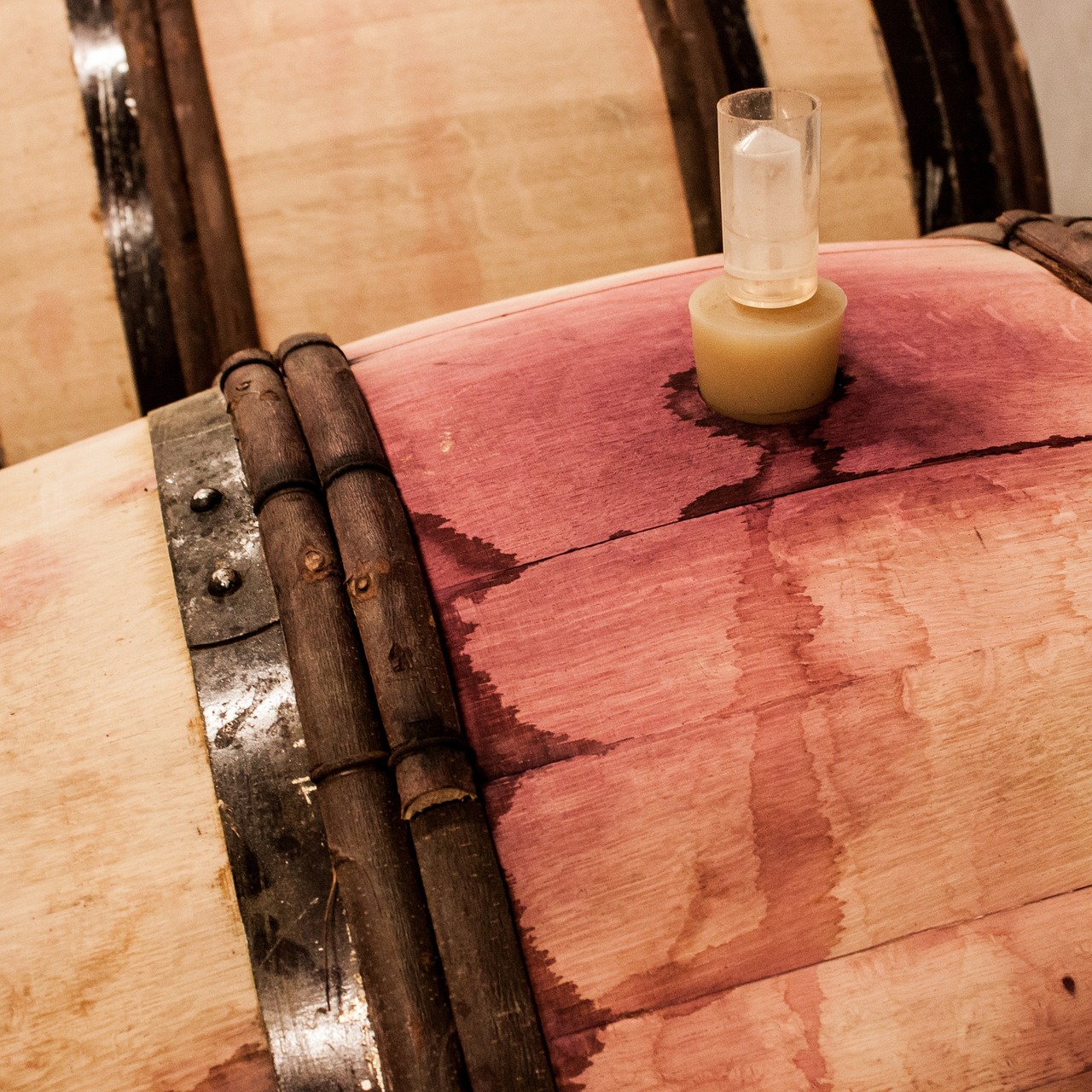
Companion Planting
Companion planting is a delightful gardening technique that can transform your wine barrel planter into a thriving ecosystem. Imagine your plants not just coexisting but supporting each other’s growth—it’s like creating a harmonious community in your garden! By choosing the right plant combinations, you can enhance growth, deter pests, and even improve flavor in some cases. For instance, planting basil alongside tomatoes is a classic combination that not only maximizes space but also helps repel pests that are notorious for munching on tomatoes.
When selecting companions for your wine barrel, consider the growth patterns and nutritional needs of the plants. Some plants thrive in the shade of taller varieties, while others may need more sunlight. This layering effect can be particularly beneficial in a confined space like a barrel. Additionally, certain plants can improve the soil quality for their companions. For example, legumes such as peas and beans fix nitrogen in the soil, enriching it for other plants that may require more nutrients.
Moreover, companion planting can also help with pest management. Some plants naturally repel pests due to their strong scents or chemical properties. For example, marigolds are known for their ability to deter nematodes and other harmful insects. By including a few marigolds in your planter, you create a natural barrier against pests, reducing the need for chemical interventions. This not only keeps your plants healthy but also promotes a more organic gardening approach.
To help you visualize some effective companion plant combinations for your wine barrel, here’s a simple table:
| Primary Plant | Companion Plant | Benefits |
|---|---|---|
| Tomato | Basil | Enhances flavor and repels pests |
| Cucumber | Radish | Repels cucumber beetles |
| Carrot | Onion | Deters carrot flies |
| Peppers | Marigold | Repels aphids and nematodes |
In conclusion, companion planting is not just about aesthetics; it’s about creating a balanced environment where plants can thrive together. By carefully selecting your plant combinations, you can enhance growth, deter pests, and enjoy a more fruitful gardening experience. So, as you prepare your wine barrel planter, take a moment to think about how different plants can work together to create a vibrant and productive garden.
- What is companion planting? Companion planting is the practice of growing different plants together for mutual benefits such as pest control, improved growth, and enhanced flavors.
- Can I plant any plants together? Not all plants are compatible. It's important to research which plants work well together to avoid negative interactions.
- How do I know if my plants are compatible? Look for plants that have similar sunlight and water requirements and consider their growth habits.
- Is companion planting only for barrels? No, companion planting can be applied in any garden setting, including traditional gardens, raised beds, and containers.
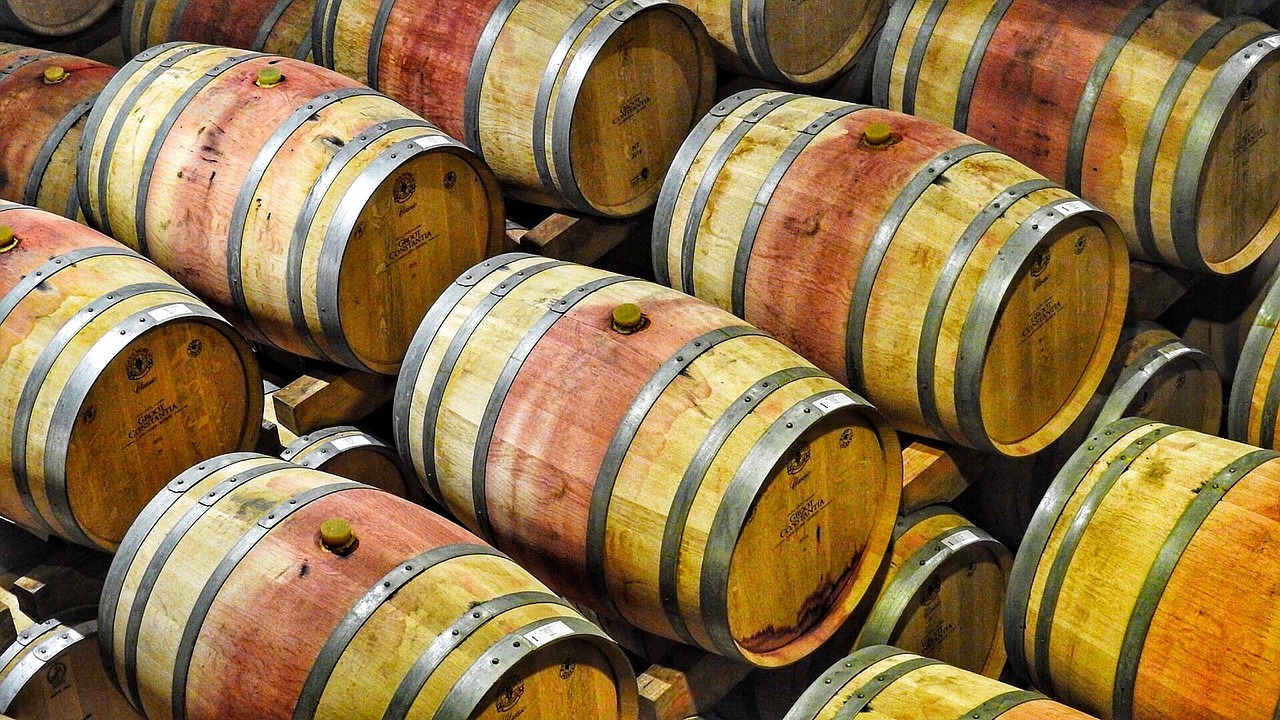
Maintenance Tips
Maintaining your wine barrel planter is essential to ensure that your plants not only survive but thrive throughout the growing season. Think of it as nurturing a delicate ecosystem; just like a chef carefully balances flavors in a dish, you’ll need to balance water, nutrients, and care to create a flourishing environment. Regular maintenance practices can make all the difference, so let’s dive into what you need to do to keep your planter looking its best.
First and foremost, establishing a consistent watering schedule is crucial. Just like we all have different hydration needs, plants vary in their moisture requirements. For instance, herbs like basil love to be kept moist, while succulents prefer to dry out between watering. A good rule of thumb is to check the soil moisture at least once a week. If the top inch of soil feels dry, it’s time to give your plants a drink. However, keep an eye on the weather; during hotter days, you might need to water more frequently. Over-watering can lead to root rot, so always ensure that the water drains properly.
Next up is fertilizing. Think of fertilizer as a multivitamin for your plants. It provides essential nutrients that may not be available in the soil. A balanced, slow-release fertilizer works wonders for most plants. You can apply it every 4-6 weeks during the growing season. Just remember to follow the instructions on the package; too much fertilizer can harm your plants instead of helping them. Additionally, consider using organic compost to enrich the soil naturally, giving your plants a boost without the risk of chemical build-up.
Monitoring for pests is another critical aspect of maintenance. Your wine barrel planter can attract various pests, from aphids to snails, which can wreak havoc on your plants. Regularly inspect your plants for any signs of infestation, such as discolored leaves or sticky residue. If you spot any unwelcome guests, don’t panic! There are numerous natural remedies you can employ. For example, a simple spray of water mixed with a few drops of dish soap can deter soft-bodied insects. Additionally, introducing beneficial insects like ladybugs can help keep pest populations in check.
Lastly, don’t forget about the importance of seasonal care. As the seasons change, so do the needs of your plants. In the fall, consider transitioning to hardier plants that can withstand cooler temperatures. You might also want to prepare your barrel for winter by adding mulch to help insulate the roots. In spring, it’s a great time to refresh the soil and remove any dead or dying plants to make room for new growth. This seasonal attention ensures that your wine barrel planter remains a vibrant focal point in your garden year-round.
Q: How often should I water my wine barrel planter?
A: It depends on the plants you have, but generally, check the soil moisture weekly. If the top inch is dry, it’s time to water.
Q: Can I use regular garden soil in my wine barrel planter?
A: While you can, it’s better to use a mix that includes potting soil, compost, and perlite for better drainage and nutrients.
Q: What should I do if my plants are infested with pests?
A: Start by inspecting your plants regularly. If you find pests, try natural remedies like a soap-water mixture or introduce beneficial insects.
Q: How can I prepare my wine barrel planter for winter?
A: In winter, consider adding mulch to insulate the roots and remove any dead plants to prevent diseases.
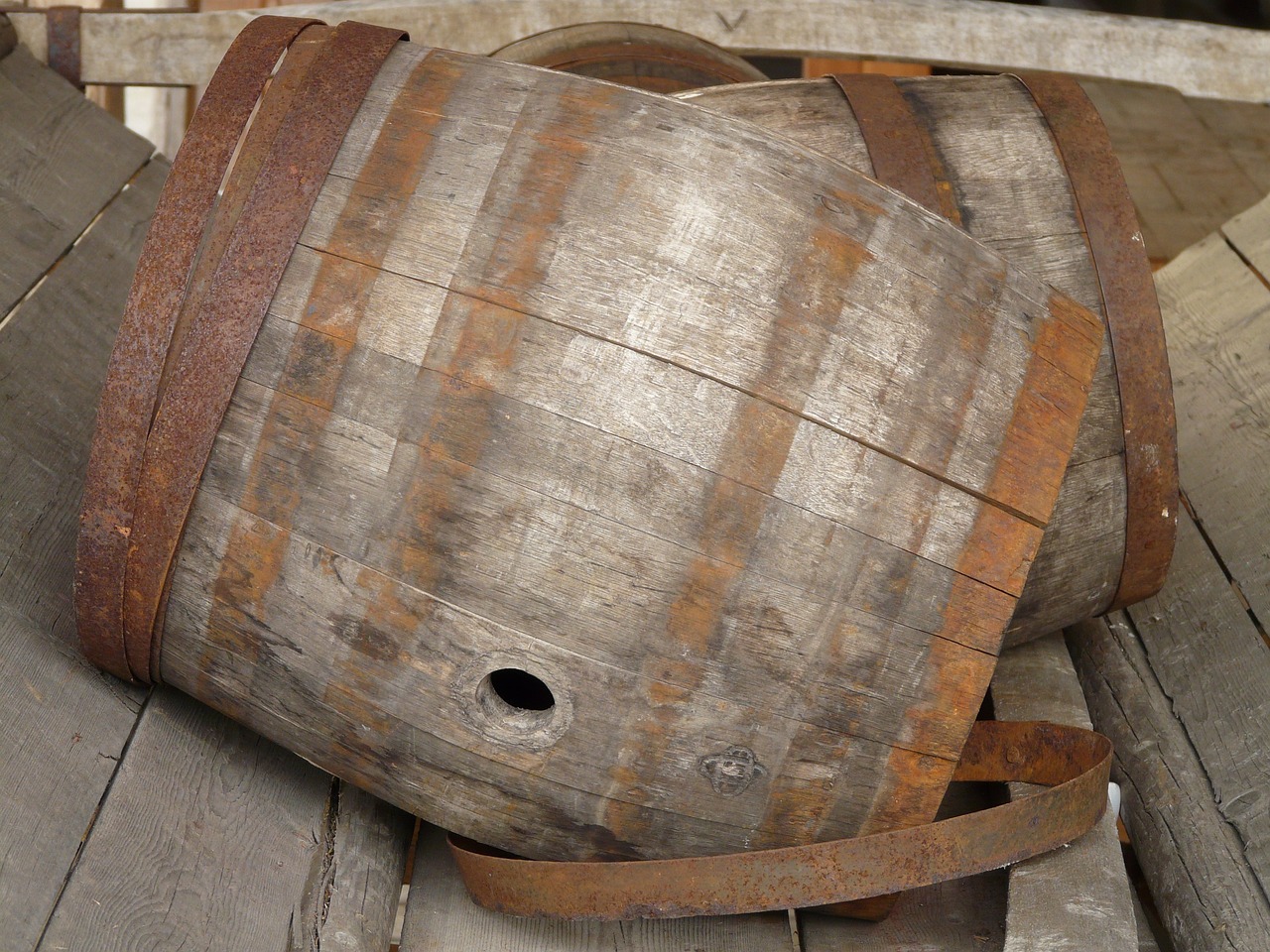
Watering Schedule
Establishing a consistent is essential for the health of your wine barrel planter. It's not just about pouring water into the barrel; it's about understanding the unique needs of your plants and the environment they are in. Imagine your plants as thirsty friends who need just the right amount of water to stay happy and vibrant. Over-watering can drown them, while under-watering can leave them parched and wilted. So, how do you strike that perfect balance?
First, consider the type of plants you've chosen. Different plants have varying water requirements. For instance, succulents and cacti prefer drier conditions, while leafy greens like lettuce thrive in moist soil. It's crucial to familiarize yourself with the specific needs of your plants. A good rule of thumb is to check the top inch of soil; if it feels dry to the touch, it's time to water. However, if it's still damp, hold off for a day or two.
Next, factor in the weather conditions. On hot, sunny days, your plants will likely need more water, while cooler, overcast days might require less. Additionally, during the rainy season, you might find that nature takes care of your watering needs, so keep an eye on the forecast. You might even consider creating a simple chart to help you keep track of how much water your plants need throughout the week. Here's a quick example:
| Day | Watering Needs |
|---|---|
| Monday | Check soil moisture; water if dry |
| Tuesday | Monitor for signs of wilting |
| Wednesday | Water if top inch of soil is dry |
| Thursday | Check for pests; adjust watering |
| Friday | Water if needed |
| Saturday | Inspect for drainage issues |
| Sunday | Prepare for next week; plan adjustments |
Lastly, don’t forget about the drainage! Proper drainage is vital to prevent water from sitting at the bottom of the barrel, which can lead to root rot. If you've enhanced drainage by adding holes or a gravel layer, monitor how quickly the water absorbs. If you notice that water is pooling, it’s a sign that you may need to adjust your watering schedule or improve drainage further.
In conclusion, a thoughtful watering schedule tailored to your specific plants and environmental conditions will not only keep your wine barrel planter flourishing but will also make your gardening experience much more enjoyable. Remember, the goal is to create a thriving ecosystem where your plants can grow strong and healthy, just like a well-tended vineyard!
- How often should I water my wine barrel planter? It depends on the plants you have and the weather conditions. Check the soil moisture regularly.
- What should I do if my plants are wilting? Check the soil moisture. If it's dry, give them a good drink. If it's wet, they might be overwatered.
- Can I use tap water for my plants? Yes, but if your tap water is heavily chlorinated, consider letting it sit for a day before using it to water your plants.
- What signs indicate that my plants need more water? Look for drooping leaves, dry soil, and a general lack of vibrancy in the foliage.

Pest Control Strategies
Pest control is an essential aspect of maintaining a healthy wine barrel planter. Without proper strategies in place, your beautiful plants can quickly become a feast for unwanted guests. So, how do you keep those pesky pests at bay while ensuring your plants thrive? Let's dive into some effective pest control strategies that are not just safe but also sustainable.
First off, it's crucial to recognize the common pests that might invade your planter. These can include aphids, spider mites, and even snails. Understanding their behavior is half the battle won. For instance, aphids love to congregate on new growth, while spider mites tend to thrive in dry conditions. By keeping a close eye on your plants and regularly inspecting them, you can catch infestations early before they wreak havoc.
One of the most effective strategies is to introduce beneficial insects into your garden. Ladybugs, lacewings, and predatory wasps are excellent at controlling aphid populations. These little helpers can be a gardener's best friend, providing a natural balance in your wine barrel planter. You can attract these beneficial insects by planting flowers like marigolds or dill nearby, creating a welcoming environment for them.
If you're looking for a more hands-on approach, consider using natural remedies. Homemade sprays made from ingredients like garlic, neem oil, or even a mix of water and dish soap can deter pests without harming your plants. For example, a garlic spray can be made by blending a few cloves with water, straining the mixture, and spraying it directly onto the affected plants. The strong scent acts as a repellent for many pests.
Another effective method is to practice good garden hygiene. Regularly removing dead leaves and debris from your planter not only keeps it looking tidy but also eliminates potential hiding spots for pests. This simple act can significantly reduce the chances of infestations taking hold.
Lastly, consider implementing a companion planting strategy. Some plants naturally repel pests due to their scent or chemical properties. For instance, planting basil alongside tomatoes can help keep tomato hornworms away. By carefully selecting companion plants, you can create a natural pest deterrent system within your wine barrel planter.
In conclusion, effective pest control strategies are vital for the success of your wine barrel planter. By understanding pest behavior, introducing beneficial insects, using natural remedies, maintaining garden hygiene, and practicing companion planting, you can create a thriving ecosystem that not only beautifies your space but also yields healthy, vibrant plants.
- What are the most common pests found in wine barrel planters? Common pests include aphids, spider mites, and snails.
- How can I attract beneficial insects to my garden? Planting flowers like marigolds and dill can attract beneficial insects.
- Are homemade pest sprays effective? Yes, homemade sprays using garlic or neem oil can deter many pests without harming plants.
- What is companion planting? Companion planting involves growing different plants together that can benefit each other, such as repelling pests or enhancing growth.
Frequently Asked Questions
- What type of wine barrel is best for a planter?
When selecting a wine barrel for your planter, look for one that is in good condition, free from major cracks or leaks. Oak barrels are popular due to their durability and natural aesthetics. Consider the size of the barrel as well; larger barrels provide more soil and space for roots, which is beneficial for plant growth.
- How do I clean and prepare my wine barrel for planting?
Cleaning your wine barrel involves scrubbing the interior with mild soap and water to remove any residue. After rinsing thoroughly, inspect for leaks, sealing any cracks with a waterproof sealant. Enhancing drainage by adding holes or a layer of gravel at the bottom will also help your plants thrive.
- What plants are suitable for a wine barrel planter?
Choosing the right plants is crucial. Look for plants that have similar sunlight and water needs. Herbs, flowers, and even small vegetables can thrive in a wine barrel. Consider companion planting to create a balanced ecosystem; for instance, pairing herbs with flowers can deter pests and enhance growth.
- How often should I water my wine barrel planter?
Establishing a consistent watering schedule is key. Generally, you should check the moisture level regularly and water when the top inch of soil feels dry. Adjust your watering frequency based on weather conditions; hot, dry days may require more frequent watering, while cooler, damp days may need less.
- What are some effective pest control strategies for my planter?
To protect your plants from pests, consider using natural remedies like neem oil or insecticidal soap. Regularly inspecting your plants for signs of pests, such as holes in leaves or webbing, can help catch infestations early. Encouraging beneficial insects like ladybugs can also keep harmful pests at bay.



















